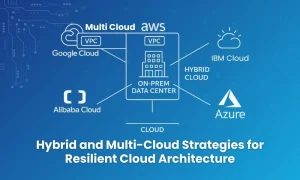Software-Defined Networking (SDN) is revolutionizing network management by offering enhanced flexibility, scalability, and cost efficiency. With centralized control and automation,
In this blog, we explore the key benefits of SDN for modern networks.
1. Enhanced Network Flexibility and Agility
SDN decouples the control and data planes, enabling dynamic network reconfiguration. This flexibility is especially beneficial for environments like data centers and cloud infrastructures, allowing rapid adaptation to changing traffic patterns.
2. Improved Network Performance and Efficiency
Research shows that SDN optimizes network performance through intelligent traffic management and load balancing. Real-time monitoring and path adjustments reduce latency, enhance throughput, and ensure more efficient utilization of network resources.
3. Simplified Network Management and Automation
SDN’s centralized control simplifies network management, including configuration, monitoring, and troubleshooting. Automation enables policy implementation and updates from a single point, reducing human error and lowering operational costs.
4. Enhanced Security Posture
SDN offers granular control over network traffic, allowing detailed security policies. This capability improves threat detection and response, enhancing the network’s overall security posture.
Comparison of SDN Benefits Across Key Network Domains
A table can succinctly summarize the benefits of SDN across various network aspects:
| Network Domain | SDN Benefit | Impact |
| Network Performance | Intelligent traffic management and load balancing | Reduced latency, improved throughput |
| Network Management | Centralized control and automation | Simplified configuration and troubleshooting |
| Security | Granular traffic control, policy enforcement | Improved detection and mitigation of threats |
| Scalability | Programmability for dynamic resource allocation | Effortless network scaling to handle growth |
| Cost Efficiency | Use of commodity hardware and centralized control | Reduction in hardware and operational costs |
5. Scalability and Resource Optimization
SDN’s programmability enables efficient allocation and scaling of network resources based on demand. This scalability ensures networks handle increased loads without performance degradation, supporting the growth of applications and services.
6. Support for Network Function Virtualization (NFV)
By integrating SDN with NFV, organizations can virtualize network functions, reducing the need for specialized hardware. This integration leads to cost savings and increased flexibility in deploying network services.
7. Facilitation of Network Slicing
SDN supports the creation of virtualized network slices, each tailored to specific application requirements. This capability is essential in environments like 5G networks, where diverse services with varying performance needs coexist.
8. Improved Quality of Service (QoS)
With SDN, network administrators can implement QoS policies that prioritize traffic based on application needs. This ensures that critical applications receive the necessary bandwidth and low latency, enhancing user experience.
9. Cost Efficiency
The centralized nature of SDN reduces the complexity of network management, leading to lower operational costs. Additionally, the ability to use commodity hardware instead of specialized devices further contributes to cost savings.
10. Future-Proofing the Network Infrastructure
SDN’s open standards and programmability ensure that networks can evolve in response to emerging technologies and requirements. This adaptability future-proofs the network infrastructure, making it resilient to technological advancements.
Conclusion
The benefits of Software-Defined Networking are multifaceted, encompassing enhanced flexibility, improved performance, simplified management, and cost efficiency.
As organizations continue to embrace digital transformation, SDN provides a robust framework to meet the evolving demands of modern networking.







